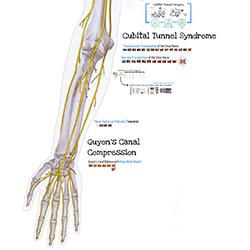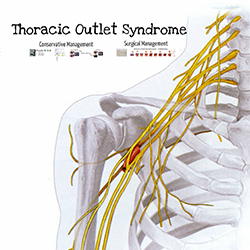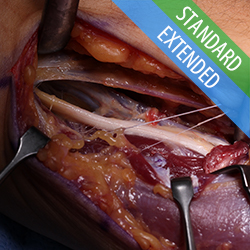The superficial radial sensory nerve can be entrapped between the brachioradialis and extensor carpi radialis longus tendons as the radial sensory nerve courses superficially from its deep origin. Compression of the radial sensory nerve presents with numbness and/or pain on the dorsal radial aspect of the hand. Pronation of the hand exacerbates these symptoms as […]
Superficial Radial Sensory Nerve Release with Tenotomy of the Brachioradialis Tendon




















